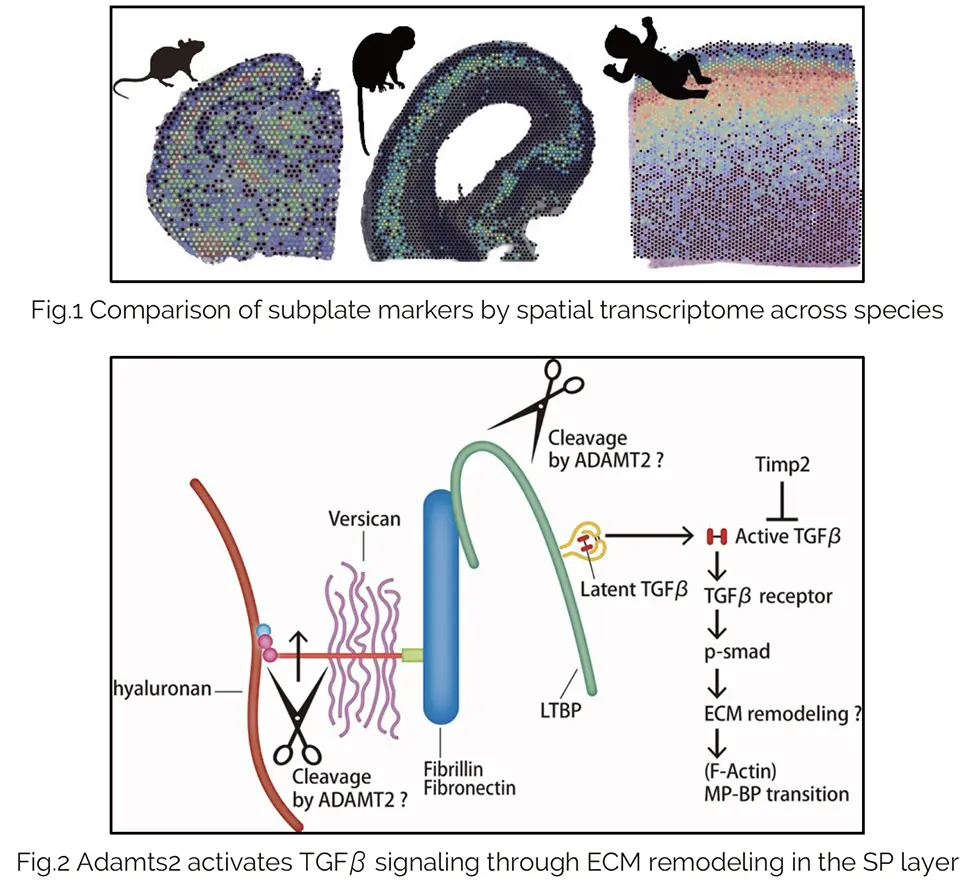
- HOME
- Developmental Neuroscience Project
Developmental Neuroscience Project
Brain development forefront revealed by the principles of neural circuit construction
Achievements in 2024
We previously found that SpNs convert the migration mode of developing neurons from multipolar to bipolar (Science, 2018). In 2024 we showed that migrating neurons secrete the metalloprotease, Adamts2, which cleaves extracellular matrix proteins to activate TGF-β, which facilitates multipolar to bipolar transitions (EMBO Rep, 2024, Fig2). In a separate study, we also found that thalamic activity is critical for the differentiation of sensory input cells in the avian cerebellum (JCN, 2024).

Publications
Papers in 2024
- Kaneko N et al.(2024) “ADAMTS2 promotes radial migration by activating TGF-β signaling in the developing neocortex. ” EMBO reports 7, 3090-3115
- Katayama R et al.(2024) “Thalamic activity-dependent specification of sensory input neurons in the developing chick entopallium.” J Comp Neurol. 6, e25627.
Key papers
- Kumamoto T and Ohtaka-Maruyama C (2022) “Visualizing Cortical Development and Evolution: A Toolkit Update” Front Neurosci., 16,876406
- Ohtaka-Maruyama C (2020) “Subplate neurons as an organizer of mammalian neocortical development. ”Front. Neuroanat. 14, 8.
- Kamimura K et al. (2019) “The HSPG Glypican Regulates Experience-Dependent Synaptic and Behavioral Plasticity by Modulating the Non-Canonical BMP Pathway.” Cell Reports, 28, 3144-3156.
- Ohtaka-Maruyama C, et al. (2018) “Synaptic transmission from subplate neurons controls radial migration of neocortical neurons.” Science 360, 313-317
- Ohtaka-Maruyama C, et al. (2013) “RP58 regulates the multipolar-bipolar transition of newborn neurons in the developing cerebral cortex.” Cell Reports, 3, 458-471

